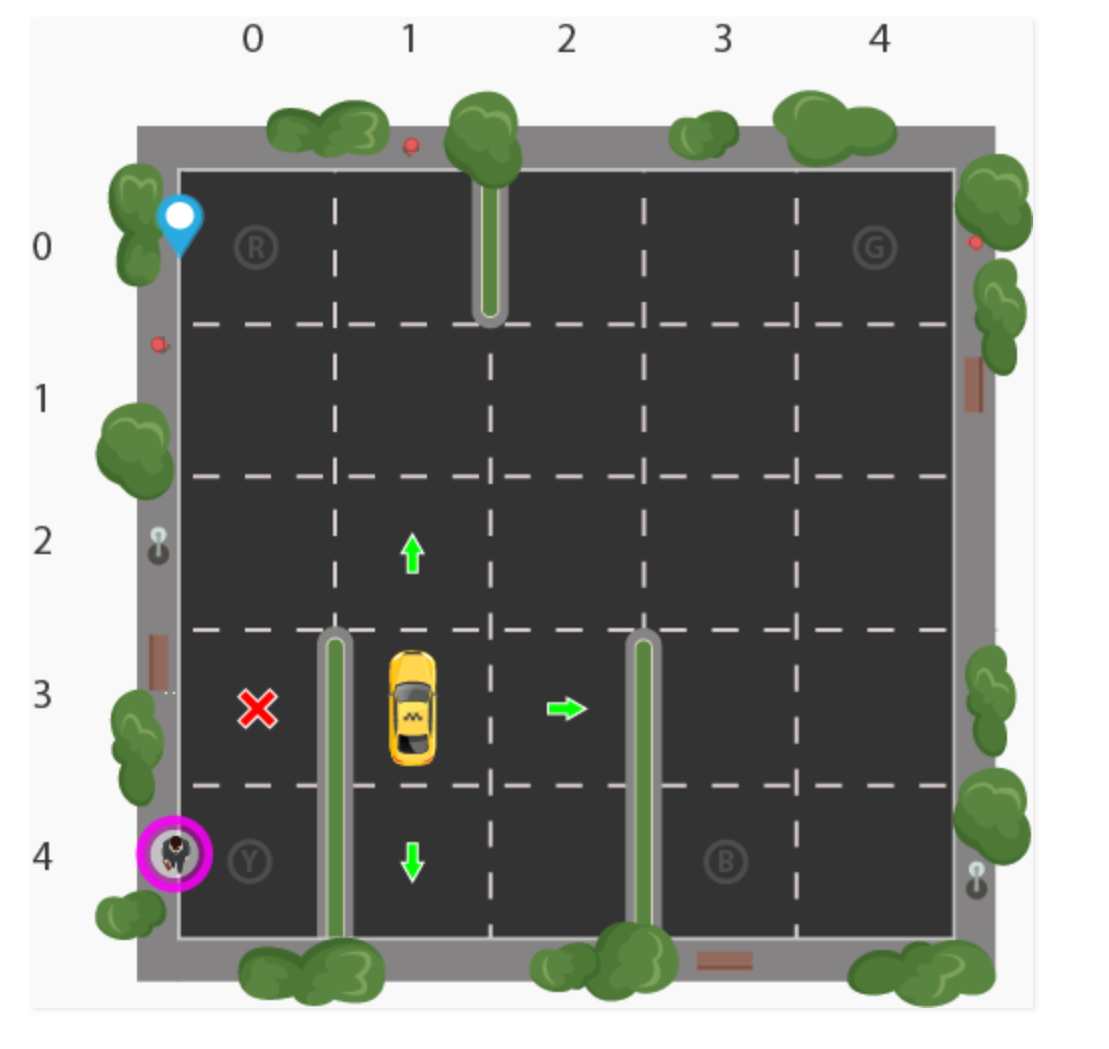Create environment from environment.yml:
From base directory:
conda env create -f ./environment.yml
Update environment from environment.yml:
From base directory and after activating existing environment:
conda env update --file ./environment.yml
This application is a console application and is intended to be run in a shell because of the frame displays. To run this script, navigate to the base directory and execute
- High positive reward for a successful drop-off because this behaviour is highly desired
- High negative reward for an unsuccessful drop-off
- Slight negative reward for not making it to the destination after every time-step
- "Slight" because reaching the destination late is better than making wrong moves trying to reach the destination as fast as possible
Consider the following image depicting the environment:
Figure 1: Cab environment
Our illustrated passenger is in position Y and wants to go to position R. There are 5x5 locations that the cab can be in. There are 5 locations that the passenger can be in (4 pickup locations plus inside the cab). There are also 4 possible drop-off locations. Therefore, the state-space is 5x5x5x4 = 500.
The agent has 6 possible actions:
- Drive south one square
- Drive north one square
- Drive east one square
- Drive west one square
- Pickup
- Drop-off
The algorithm that will be implemented is a simple Q-learning algorithm. This algorithm was chosen because the state space is small enough such that function approximators are not needed for the entries in the Q-table.
The Q-learning algorithm updates the entries in the Q-table using a simple update equation:
new_value = (1 - alpha) * old_value + alpha * (reward + gamma * next_max)The hyper-paremeters alpha and gamma are pre-determined values that we set prior to running our algorithm. The old_value is the old Q-value given a particular state-action coordinate in the Q-table and the next_max is the maximum Q-value extracted from the row corresponding to the next state. Using this update equation, the Q-table, which approximates the utility of actions given states, will become more and more accurate.
With respect to exploration and exploitation, we use a non-decaying epsilon value to balance exploration and exploitation. A more sophisticated strategy would decay epsilon as the Q-table became more accurate because a more accurate Q-table should exploit its knowledge more frequently.
This project was a simple RL application that provided me with the fundamentals to explore more complex RL frameworks and applications.
